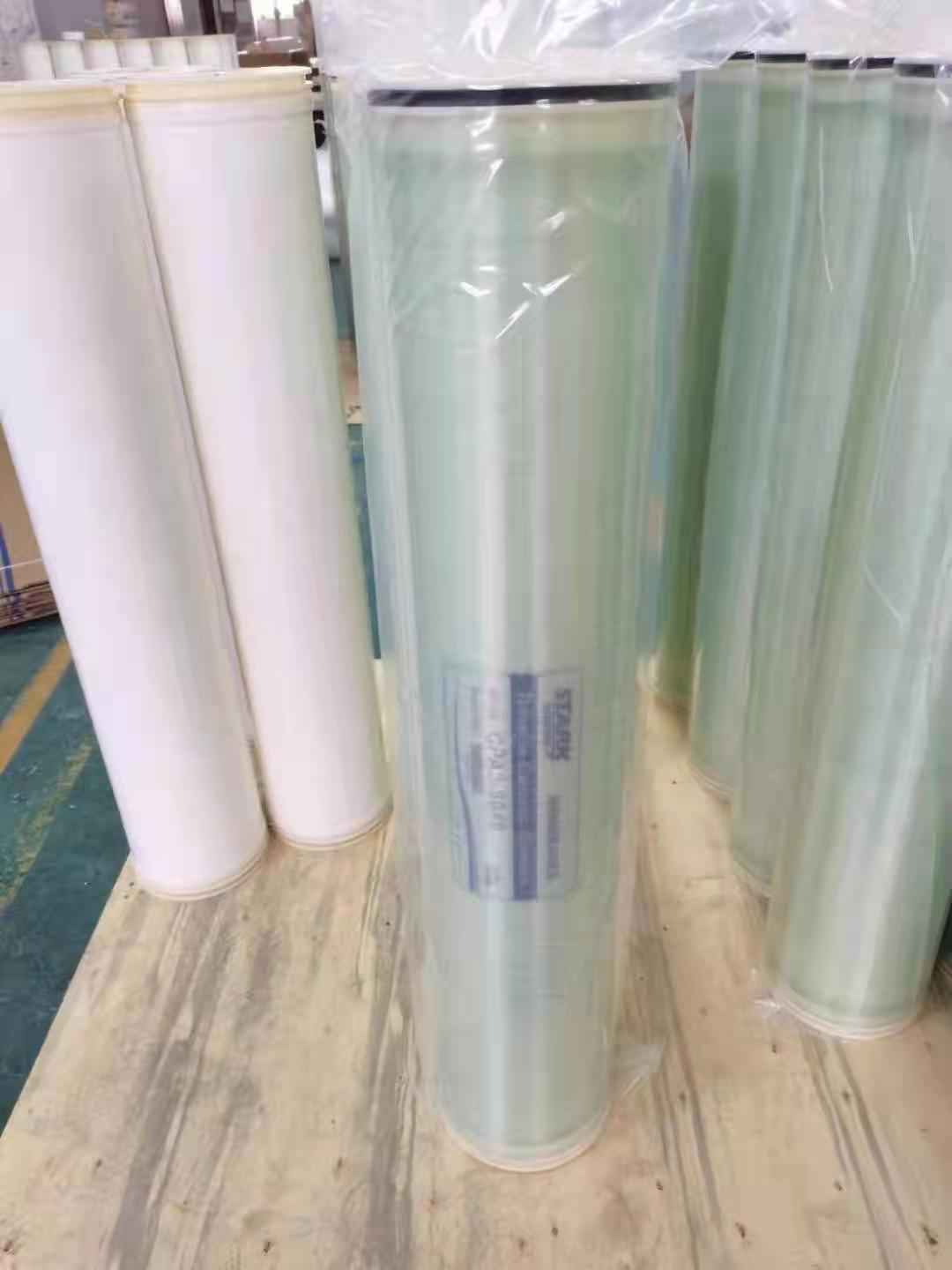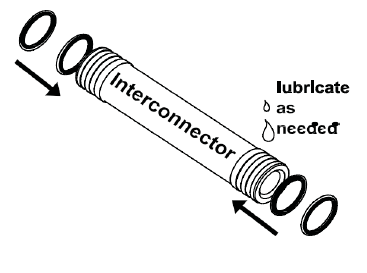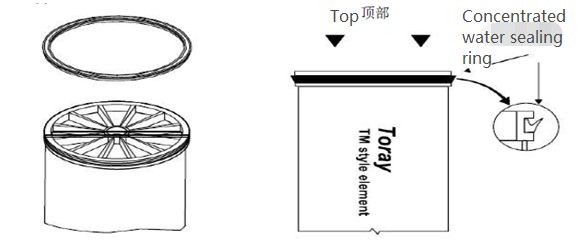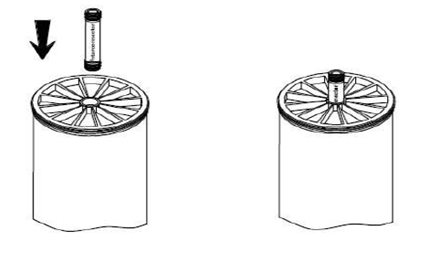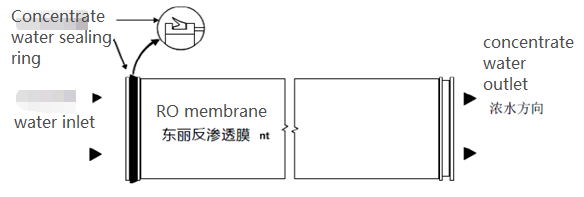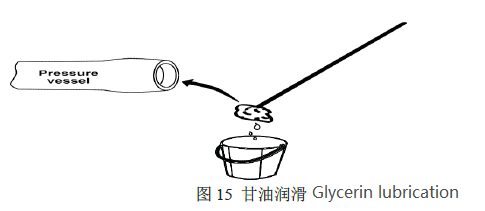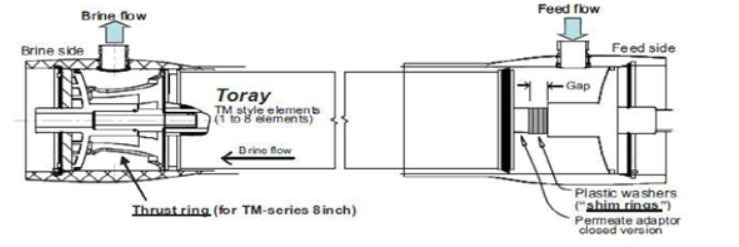When installing the reverse osmosis membrane, you must pay attention to the installation method. If the installation method is not correct, the reverse osmosis membrane may be damaged. The reverse osmosis membrane is the core component of the water treatment system, so how to install the reverse osmosis membrane? It is enough to read this article on the installation of reverse osmosis membrane. The following is a detailed introduction to the installation of reverse osmosis membrane in the form of pictures and texts.
Unpack the reverse osmosis membrane: 1. Open the packing box of the reverse osmosis membrane element, and take out the reverse osmosis and reverse osmosis membrane element and parts. Parts are individually packaged in small plastic bags in the box. Set the empty box aside. 2 Parts to be prepared before installation: Concentrated water sealing ring: 1 for each reverse osmosis membrane element. ○ Rings: 4 for each reverse osmosis membrane element. Open water production adapter: 1 per pressure vessel. Closed water production adapter: 1 per pressure vessel. Product water connection pipe: the number of reverse osmosis membrane elements – the number of pressure vessels. 3. Install an O-ring on the reverse osmosis membrane element connector, apply glycerin to lubricate it during installation, and install it carefully to avoid damage to the O-ring. It is recommended to place the assembled adapter in a clean place before placing it in the production tube.
Assembly of reverse osmosis membrane parts:
1. Install the concentrated water seal ring
2. Install the reverse osmosis element connector and lubricate with glycerin as necessary
Installation of reverse osmosis membrane:
This work is best done by two people.
2 As shown in the figure, confirm the position and direction of V-type thick water seal ring.
Remarks: The concentrated water sealing ring shall not be installed on the concentrated water end of each reverse osmosis membrane element.
3 Open the water inlet of the O pressure vessel. If the site conditions permit, before unpacking the reverse osmosis membrane element, the locking device of each pressure vessel can be removed to complete the preparation work.
4 Lubricate the inside of the R0 pressure vessel with water and glycerin. This facilitates the installation of reverse osmosis membrane elements, especially for relatively long pressure vessels. Each pressure vessel requires approximately 100 glycerol. If the viscosity of glycerin is too high, it can be diluted with clean water to ensure adequate wetting. Open and close the pressure vessel in a short period of time, minimizing the possibility of foreign matter, dust and dirt entering the pressure vessel. Use a mop or similar tool to lubricate the entire pressure vessel.
5. After lubricating the concentrated water sealing ring and the inner wall of the pressure vessel with glycerin, install the reverse osmosis membrane element from the water inlet end of the pressure vessel to about 2/3 position (see Figure 16). Carefully and smoothly install the reverse osmosis membrane element, especially the first reverse osmosis membrane element.
6. As with the first installed reverse osmosis membrane element, install the concentrated water sealing ring. As shown in Figure 17, use the reverse osmosis membrane element adapter to connect two reverse osmosis membrane elements. Partially loaded reverse osmosis membrane elements are held in place by human fit. Push the two into the pressure vessel smoothly and firmly, keeping them in a straight line to avoid damage to the reverse osmosis membrane element adapter or the concentrate seal.
7 Repeat the above steps to load the reverse osmosis membrane elements into the pressure vessel one by one.
8. When the last reverse osmosis membrane element is installed, install the produced water adapter provided by the pressure vessel manufacturer.
9. Push the last reverse osmosis membrane element into place to ensure that the first reverse osmosis membrane element installed is tightly connected.
10 In order to avoid premature damage of the permeate sealing ring, please ensure that the reverse osmosis membrane element cannot move in the axial direction. For end plate permeate tubing, use the permeate adapter provided by the pressure vessel manufacturer. Fill remaining gaps and tolerances with gaskets provided by the pressure vessel manufacturer.
11. When all reverse osmosis membrane elements are loaded, calculate the "A" value. If the "eight" value is greater than the gasket thickness provided by the pressure vessel manufacturer, use gaskets to fill the oversized gap. The remaining gap should be less than the gasket thickness. If the permeate line is connected on the inlet side of the pressure vessel, the risk of mechanical separation of the permeate adapter is very high.
Note: For the installation position of the water production pipeline, the concentrated water side of the pressure vessel is more suitable than the water inlet side. Unused permeate ports are best plugged with closed permeate adapters provided by the pressure vessel manufacturer. This will minimize the "short circuit" between the produced water and the concentrated water. 1 Install the end plate on the water inlet side and connect the supporting piping system. Make sure that all pressure vessel end plate seals are installed.
Tory Membrane is a professional agent of Japan's Toray membrane elements. Its main products include Toray reverse osmosis membranes, seawater desalination membranes, nanofiltration membranes, ultrafiltration membranes, and MBR flat membranes. We promise: All Toray film products of our company are shipped from the original factory and guaranteed 100% authentic. Toy Film is committed to providing customers with products with better cost performance, better quality and more complete services.
This article was originally published by Tor©y Film (www.stllvmo.com). Please indicate the address of this article in the form of a link or indicate the source of the article when reprinting!

